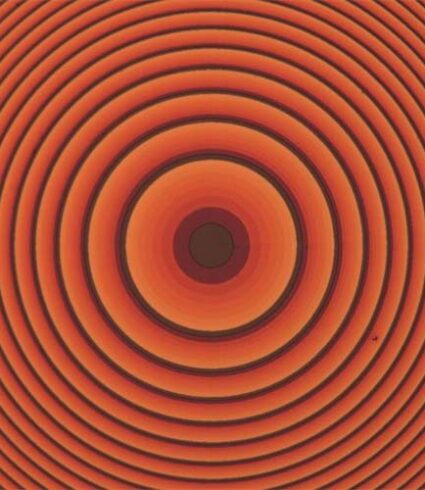The world’s first flat fisheye lens

What it is
A fisheye lens offering a 180-degree view via a single pane of glass.

Why it matters
Traditionally, to get a crisp panoramic image required the stacking of multiple lenses on top of each other, resulting in a bulky form factor and adding cost to the production process. The invention of a lightweight, compact fisheye lens—led by Juejun Hu, the John F. Elliott Professor in MIT’s Department of Materials Science and Engineering—could be used to boost situational awareness in complex sensors, consumer electronics devices, medical imaging devices, industry automation, and automotive applications.
The design is a type of “metalens,” a wafer-thin material patterned with microscopic features that work together to manipulate light in a specific way. Hu and his team first sought to prove analytically that the concept would work and then built an operational fisheye lens. The technology’s current iteration operates on only single-band infrared or visible light. There is potential for the lens to be used in multiband, Hu added, which means it can also be used for applications such as RGB full-color displays.
The fisheye lens is a millimeter-thin piece of glass; carved into one side are tiny optical structures that scatter incoming light.
What’s next
Hu and his colleagues recently spun off a company called 2Pi Optics to work on commercialization of the technology. The company patented the fisheye metalens and is working with partners on use cases in automotive and consumer electronics, among others. Hu says the advantages of the fisheye lens include a wider field of view, ultrathin lightweight architecture, better imaging quality, and lower cost of manufacturing at scale. It is also insensitive to temperature variation.
“This is a simple design that does not require additional components to produce a panoramic image,” said Hu. “It keeps a minimum element count at high performance, which helps hold down costs.”
